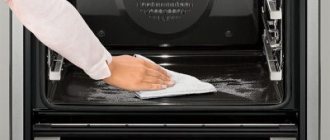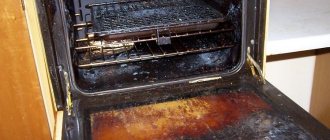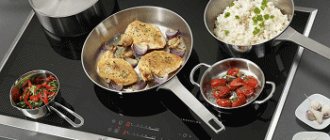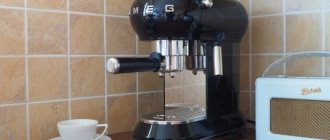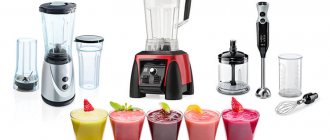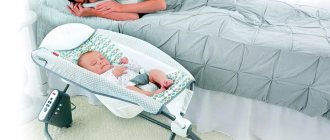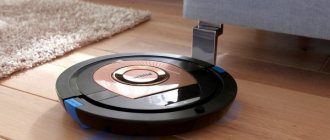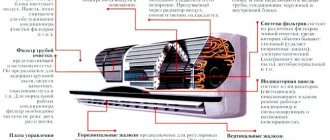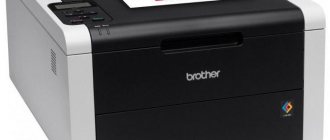Cooking in the oven means not only delicious dishes, but also the need for careful cleaning, because drops of fat accumulate and form a thick layer of dirt. At the same time, there are different types of oven cleaning, and the right choice will ensure their long and reliable service.
Modern ovens have three possible cleaning options, and when choosing such kitchen appliances, be sure to pay attention to this point.
Features of cleaning ovens
During cooking in the oven, in addition to water, fat deposited on the internal surfaces also evaporates. Over time, an increasingly thick layer of contamination forms, which also hardens when cooled, becoming especially difficult to remove. To minimize labor costs during cleaning, you should adhere to the following recommendations:
- wipe the camera after each use;
- use baking sleeves, baking paper and other devices;
- do not line the bottom with foil, as this provokes heat accumulation, which can damage the enamel;
- do not use products that scratch or corrode the enamel coating;
- regularly check the condition of the rubber seal on the door;
- ventilate the oven after each cleaning;
- de-energize the cabinet before starting work.
Cleaning in ovens is carried out through pyrolysis, catalysis and hydrolysis.
Characteristics of the best detergents for cleaning the oven
Which product should I use to clean my oven?
The cheapest, but at the same time ineffective means for cleaning the oven can be called laundry soap. It is best to use it after each use of the device for its intended purpose, since removing dried fat with its help will be extremely problematic. Soap is simply dissolved in water to obtain a saturated soap solution, which is used to treat all contaminated surfaces of the oven and then rinse off.
Laundry soap
Also among the most effective and therefore most popular oven cleaners are:
- Frosh is an environmentally friendly detergent, the main component of which is soda. The product is a blue liquid poured into a container with a spray bottle. When applied and distributed on the surface, it foams a little, and small particles of soda are felt to the touch. Its use consists of applying it to the surface and then wiping it after a short time;
Frosh - Amway, Oven Cleaner is a gel oven cleaner that has good cleaning properties and is applied to the surface with a special brush included in the kit. After the surface of the oven has been completely treated with the composition, for which it is imperative to use protective gloves, you must leave the oven in this condition for no more than thirty minutes. After this, it is necessary to very carefully rinse off all remnants of the product from the surface, since the main components in this case are quite strong acids;
Amway – Oven Cleaner - Sanita is an oven cleaner with a gel consistency. For application, you can use any available tools, but all work must also be done only with gloves. The exposure time for fat breakdown is 20 minutes. Due to the fact that fatty contaminants soften during exposure, they gradually go down the walls. After standing for the specified time, the surface of the oven must be thoroughly rinsed.
Sanita
When cleaning the oven, wear gloves.
Types of systems
There are three modern oven cleaning methods that work differently and are applicable in different cases. They depend on the type of cabinet and their overview is described in the instructions.
Note! Sometimes traditional oven cleaning is also distinguished, which consists of manually cleaning surfaces using household chemicals. In this case, do not use chlorine-containing or acidic compounds, powders or metal sponges.
Pyrolysis cleaning method
Can only be used in electric ovens, as high temperatures, up to 500°C, are required. This method is the most aggressive, but also the most effective.
Its essence is to heat the oven to maximum temperature, resulting in natural combustion of all contaminants present on the surfaces. After this, the resulting ash is removed with a regular rag. This is how the self-cleaning process occurs.
The pyrolytic system for removing contaminants is considered the most aggressive, but at the same time quite effective.
Important! During the procedure, the oven door is completely locked for the safety of users.
Catalytic purification method
This method is based on a special internal coating of the oven – eco-enamel. It consists of oxides of cerium, copper and manganese, and it itself has a porous structure. Due to this, a purification process is launched, which is called catalysis: when heated from 150 ° C, contaminants begin to decompose into oxygen, water and organic residues. That is, the oven is cleaned simultaneously with cooking.
With the help of catalysis, not only electric ovens are cleaned, but also gas ovens.
However, eco-enamel is not used for all interior surfaces, and some parts, such as the grille and door wall, will have to be cleaned manually.
Hydrolytic cleaning
The essence of this technique is to place a baking sheet with water in a preheated oven, which is left there until the water has completely evaporated. At the same time, under the influence of steam, contaminants are soaked, and, therefore, removed much easier. In essence, this is a lightweight version of conventional manual cleaning. The effectiveness of the method depends on the age and amount of contamination.
Hydrolysis is not self-cleaning since you will have to do most of the work yourself.
What are the different types of oven cleaning?
Available options:
- pyrolytic cleaning;
- catalytic;
- hydrolysis (removal of contaminants with steam);
- cleaning surfaces with detergent.
Each method is implemented differently. What unites them all is the thermal effect. Moreover, the intensity of heating depends on various factors: the method of removing contaminants, the type of coating, the use of auxiliary products. When heated, the properties of substances change. As a result, dirt is better separated from the oven walls. However, if you choose the wrong temperature, the opposite effect can be achieved: dirt will bake even more on enamel surfaces. It will be more difficult to remove it.
Pros and cons of each system
Each of the systems considered has its own advantages and disadvantages that must be taken into account when choosing.
Pyrolysis
Advantages:
- no mechanical impact or household chemicals required:
- complete removal of any kind of contamination from all internal surfaces, including the door;
- cleansing is achieved the first time;
- process safety;
- the efficiency of the method does not decrease with increasing service life of the oven;
- no need to disassemble the cabinet into parts, separately washing grates, baking sheets, etc.
The essence of pyrolytic cleaning means the combustion of any contamination that may have formed on the walls of the oven.
Disadvantages can be considered:
- release of a pungent odor during the cleaning process;
- significant energy costs with frequent use;
- high cost of the cabinet.
Note! In many models, level pyrolysis is available, that is, it is possible to clean at 200-300 ° C, if the contamination is not so significant.
Catalytic
Has the following advantages:
- cleaning at low temperatures and saving energy;
- long service life, since panels with catalysis last for at least five years;
- ease of dismantling and replacing panels, which are designed for 300 hours of cleaning;
- affordable ovens.
The catalytic one is clearly inferior to the pyrolysis one, but it is cheaper and in any case greatly simplifies the task of keeping the oven clean.
Among the disadvantages are:
- the need to manually clean the grilles and doors;
- the need for repeated cleaning if the contamination is too intense.
Important! If dairy products or sugar get on the surface of the catalytic panel, it will lose its properties.
Hydrolytic
The benefits include:
- suitable for both gas and electric ovens;
- high efficiency until the oven cools down;
- minimal energy consumption;
- savings on cleaning products;
- safety as the doors and body remain cool to the touch.
Additionally, for such ovens they began to sell cleaning products that help soften fats and burnt dough under the influence of hot steam.
Disadvantages can be considered:
- the need for partial manual cleaning;
- low efficiency with dried contaminants.
Important! Use aggressive chemicals to improve cleaning with caution, as this can lead to corrosion on the walls.
Pyrolytic cleaning
Pyrolysis is deservedly considered the most effective and most powerful way to clean an electric oven. This technology completely burns leftover food or fat deposits, turning them into fine ash. To understand what pyrolytic cleaning (self-cleaning) of an oven is, you must first understand the principle of operation of the system.
Interesting article on the topic: How to choose an electric oven
The mode is activated on the control panel. Here you select the desired function and the “Start” button. After this, the door is locked, and a temperature of up to 500°C arises inside the work surface. It “envelops” the walls of the inner area, turning fat droplets into molecules. Important: the oven must be empty during the process.
Since the technology requires large amounts of electricity, many manufacturers perform level pyrolysis. That is, you can clean the equipment at 200-300°C or choose a more powerful mode. It all depends on the degree of pollution.
The main advantages of this type of cleaning:
- high temperature burns even the strongest fat the first time;
- the technology is designed for the entire service life of the oven, which means there is no need to buy replacement accessories;
- At the end of the process, the resulting ash can simply be wiped off with a rag.
Pyrolysis also has very significant disadvantages.
Namely:
- During cleaning, a pungent odor is released, so it is better to immediately install a powerful hood in the kitchen.
- Frequent use of technology will lead to impressive amounts in your electricity bill.
- Pyrolysis is intended only for cleaning the interior walls, and dirty grates, baking sheets and grills will have to be washed by hand.
When choosing pyrolytic oven cleaning, it is important to remember that this equipment belongs to the “Lux” class. The high price is due to the material from which the internal walls of household appliances are made. In addition, the doors and housing are equipped with additional thermal protection to prevent burns.
Comparison of oven cleaning systems
To determine which oven cleaning system is best, you should rely on frequency of use. So, catalysis or hydrolysis is better suited for infrequent use, since the resulting pollution will be insignificant.
You will have to decide which type of oven cleaning is best in each individual case on your own.
If you plan to use the cabinet frequently, almost daily, then a pyrolytic system would be the best choice. Yes, its initial price is higher than others, but it will quickly make up for it by saving a significant amount of time spent on cleaning. And the energy costs, although they are the highest among analogues, are generally not too high, and for three hours of firing they will amount to about 20 rubles.
This is in the full sense of the word “self-cleaning of the oven” without human intervention - all that is required is to start pyrolysis and then remove the ashes.
What is traditional oven cleaning?
In fact, traditional oven cleaning is a manual mechanical type of action, namely hand washing using all available means. All its advantages over more convenient, and, importantly, more efficient methods, come down to financial savings not only when purchasing this household appliance, but also during operation, since only it does not require the use of electrical energy.
But in this case, we must not forget about the need to purchase special products, which are also expensive, and when used, it will be possible to achieve more or less effective cleaning and not spoil the inner surface of the oven.
The traditional method of oven processing has many more disadvantages. They consist, first of all, in the fact that all cleaning must be done manually. And by choosing the wrong composition or not calculating the force of influence, you can simply damage the protective coating of the metal, which can subsequently lead to corrosion or other negative consequences that will not have the best effect not only on the use of the oven for its intended purpose, but also on its cleaning.
What else affects the difficulty of cleaning surfaces?
If you need to choose a model that is not very expensive, then you should choose an oven with a smooth chamber surface. Enamel without roughness and pores does not retain additional contaminants, and it will be easier to remove them. However, in this case you will still have to resort to household chemicals.
Caring for your oven is not difficult and will not take much time if you do it on time.
In general, regardless of the type of oven, proper care of it involves cleaning after each use. This makes the cleaning process much easier.
After each use of the oven, you just need to wash it with detergent and wipe dry, without waiting for a black greasy coating to form.
Useful tips
Here are some tips for caring for your oven:
- telescopic guides and the oven door should be washed separately;
- hydrolysis cleaning can be improved using a solution of laundry soap;
- brown deposits that form on the glass of the door are removed with wet soda, which must be left for 15 minutes;
- greasy stains from the surface of the enamel can be removed using baking powder moistened with water, or a mixture of soda and citric acid.
It is not recommended to use steel wool to scrub away dirt to avoid damaging the enamel.
The kitchen in general and the oven in particular must be kept clean at all times. With the right choice of cleaning method, this process will no longer be uncomfortable.
To please yourself and your loved ones with culinary masterpieces that are not spoiled by the unpleasant smell of burning and soot, you should not be lazy and clean the oven regularly.
Which oven cleaning is better: catalytic or hydrolysis?
As mentioned above, hydrolysis is a cleaning method using water vapor, and with a catalytic system, surfaces get rid of plaque and carbon deposits due to the characteristics of the panel coating.
Both methods are used not only in electric, but also in gas units, and this is a plus.
Continuing the comparative analysis, we can say that hydrolysis saves money (there is no need to purchase cleaning agents), and the catalytic method saves physical effort when washing surfaces, since it neutralizes grease. In addition, the catalytic panels will have to be replaced over time.
Related article: Pillow with roses crochet fillet crochet
Which method is better is up to the hostess to decide; in this situation, it all depends on personal preferences.
